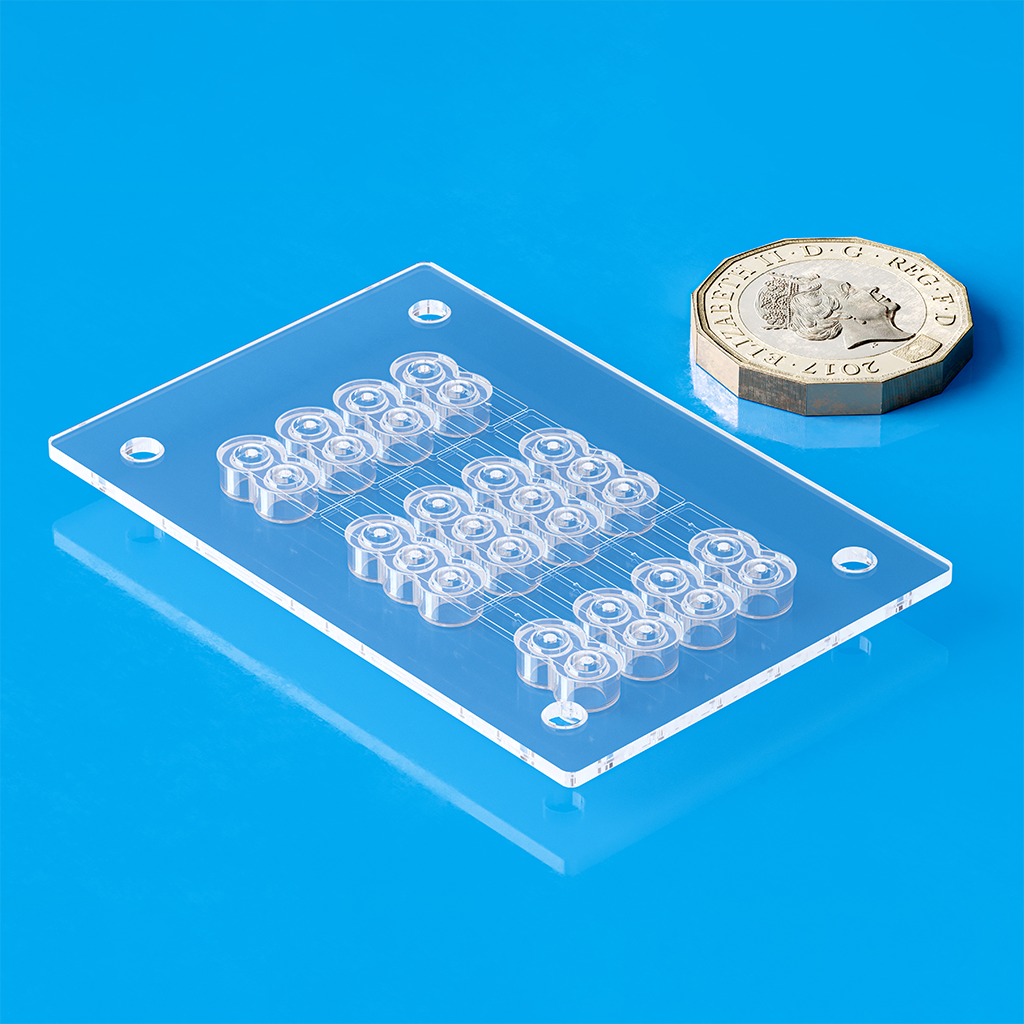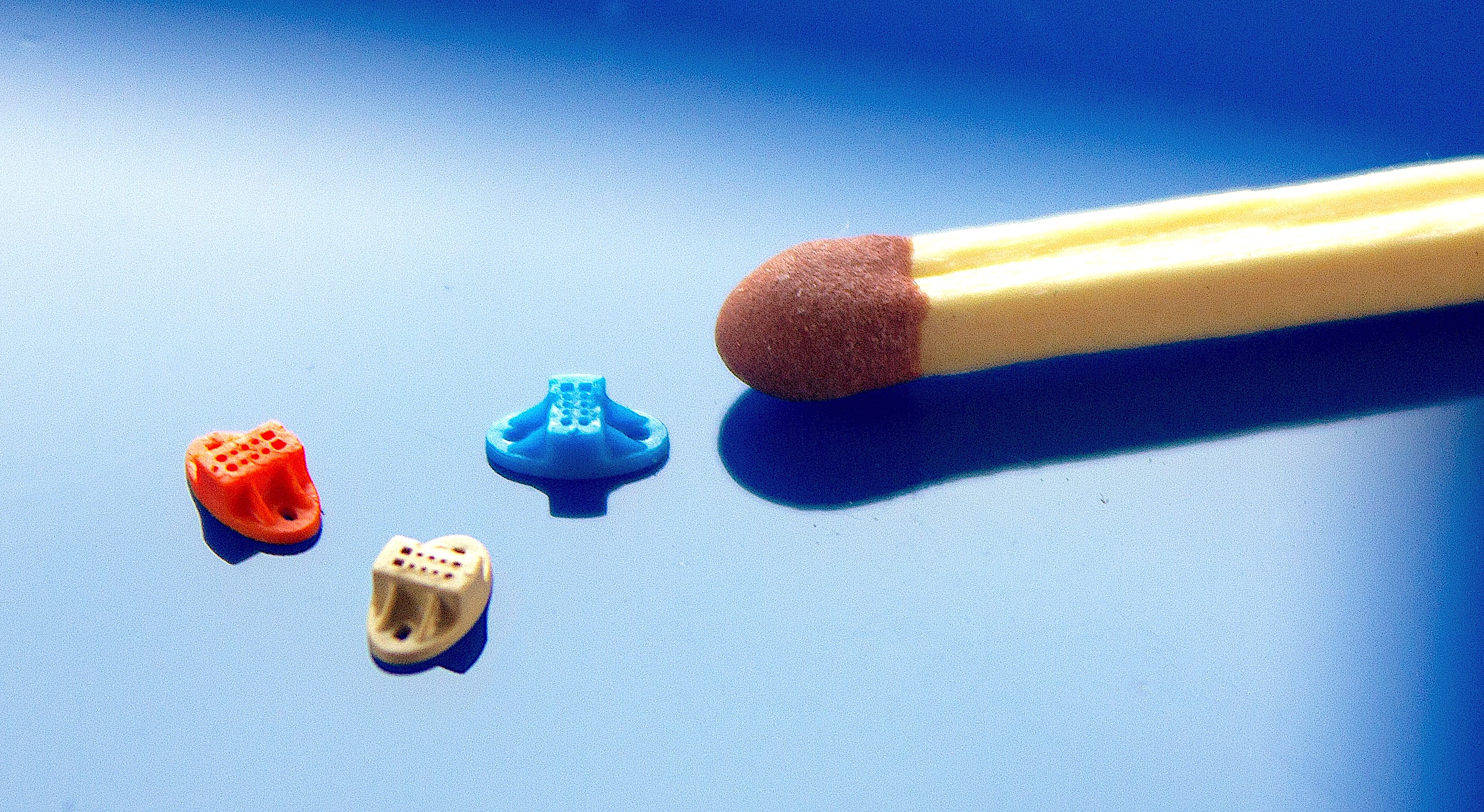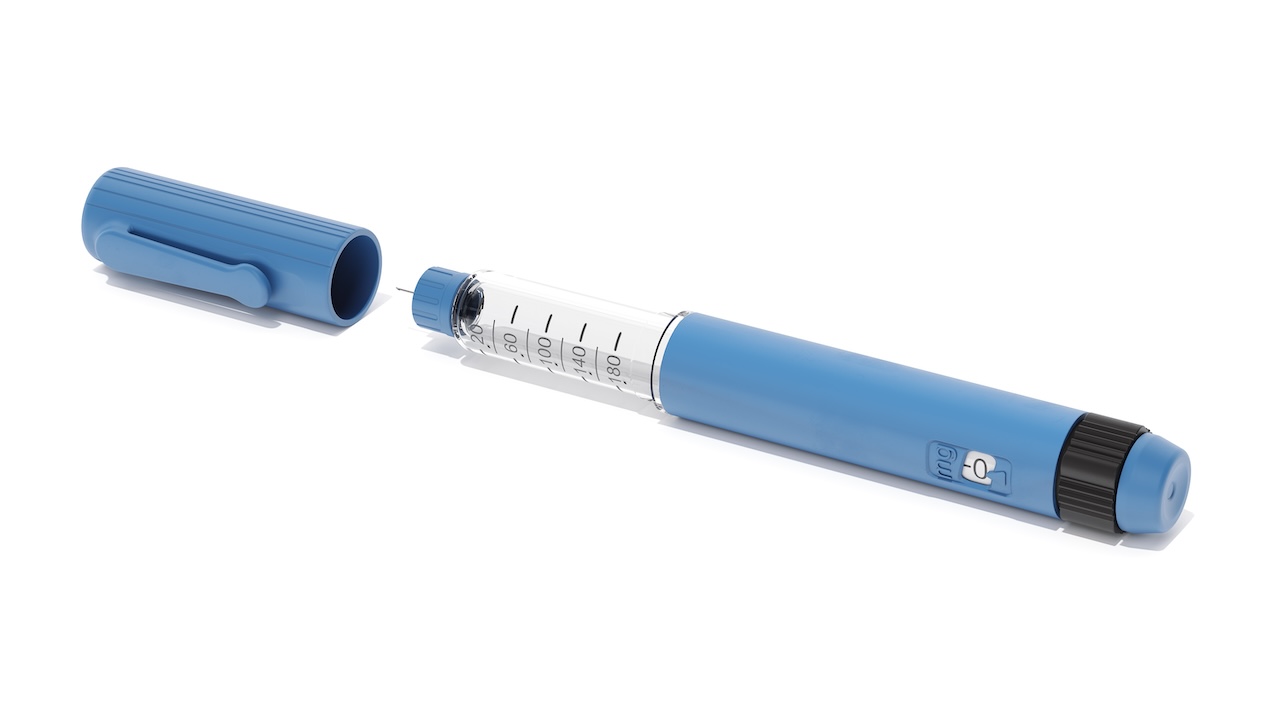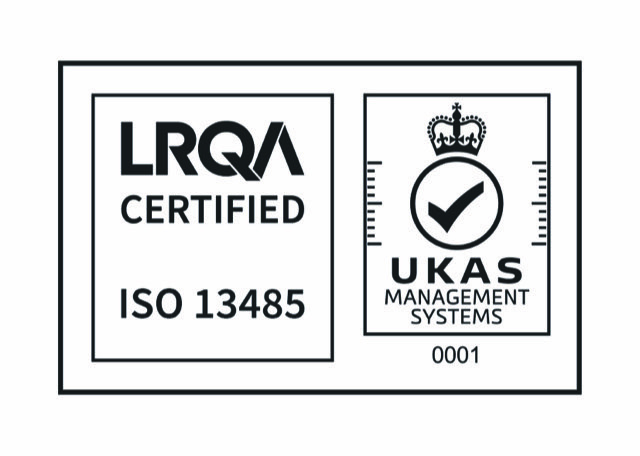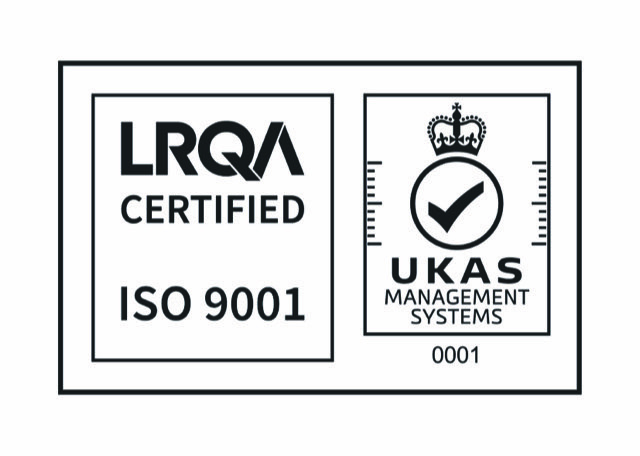Micro Molding: Lab-on-a-chip and its applications
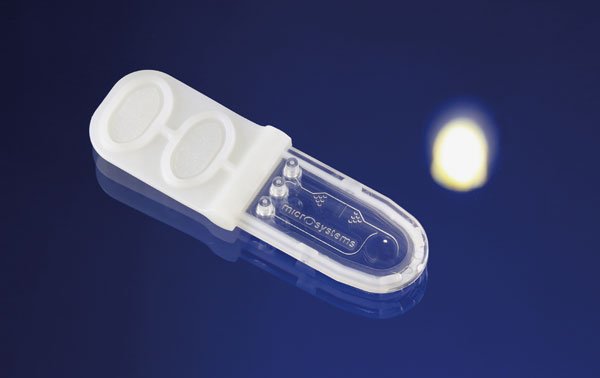
A Lab-on-a-chip with a base plate of 300 μm micro channels and chambers with static micro mixing features. The top part is characterised by three LUER cones. 2 of these connections are used to feed the liquids — 1 sample liquid and 1 reagent — to the system. Via the third LUER cone the flow rate is controlled by applying vacuum in order to reinforce the capillary effect (Photo: Micro Systems)
What is Microfluidics?
Microfluidics refers to the study of fluids at the micro- and nanoscale levels, and the technology of creating micro-miniaturized devices with chambers and tunnels through which fluids move or are constrained. Microfluidics technology works with fluid quantities as tiny as femtoliters (fL), or one quadrillionth of a liter. On a micrometric scale, fluids perform very differently from how they do in daily life, and these distinctive characteristics are crucial for new scientific research and inventions.
Microfluidics is useful for the creation of low volume fluid processing devices that enable multiplexing, automation, and high-throughput screening. Beginning in the 1980s, microfluidics was developed and is now used in the creation of multiple technologies in the fields of biotechnology, pharmaceutical engineering, patient testing and diagnostics, biodefense and chemical engineering. Common examples of microfluidics applications include but are not limited to DNA chips, lab-on-a-chip, organs-on-chips, etc. The work of an entire lab can be condensed onto a microfluidic device that is only a few centimetres in size thanks to microfluidics.
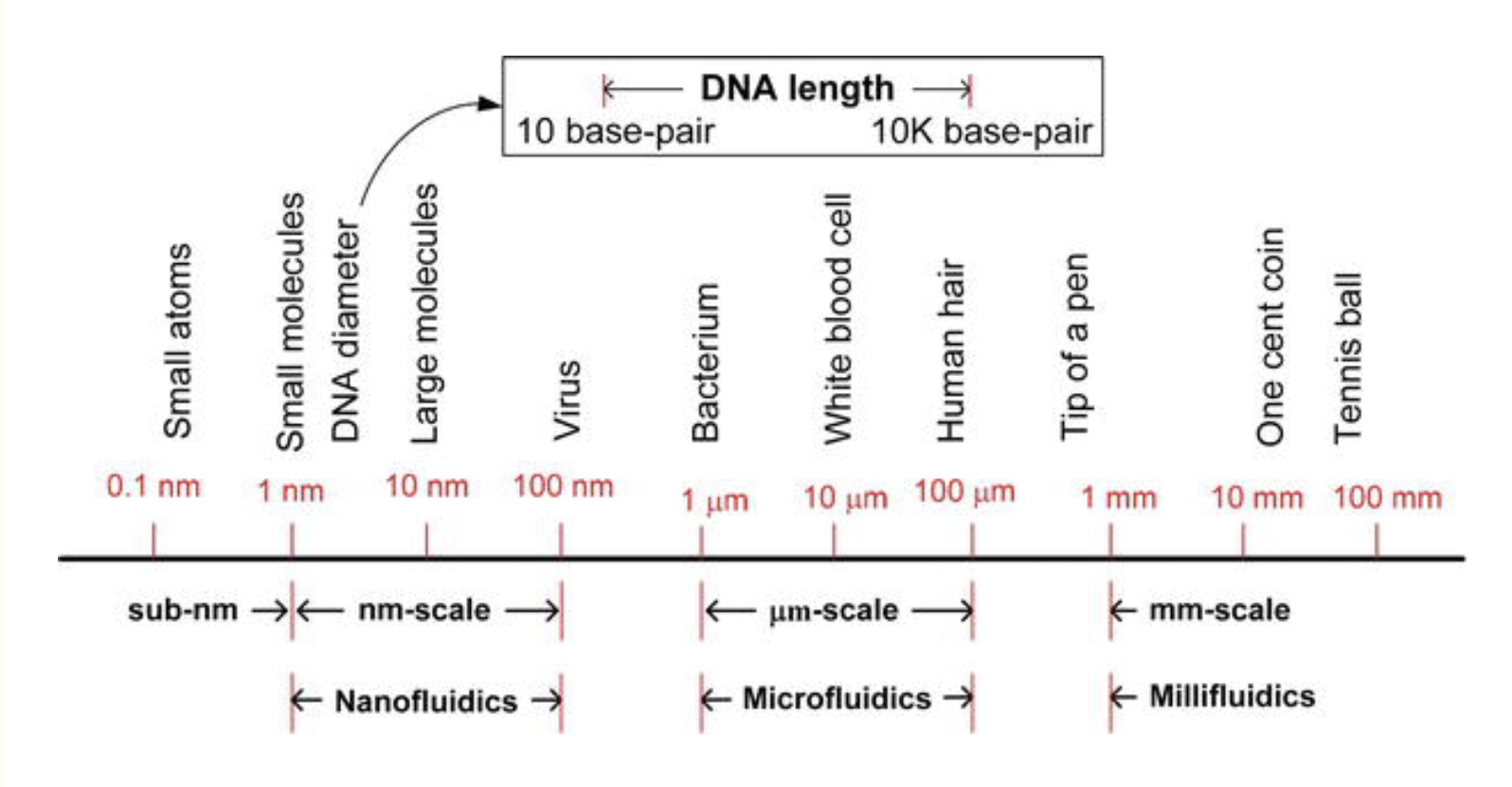
Illustrations of objects that range in size, and the distinctions between nano, micro, and millifluidics (Karanassios, 2018)
What is Lab-on-a-chip ?
A Lab-on-a-Chip (LOC) is a miniaturised instrument that combines nanotechnology and microfluidics. The channels, no thicker than a hair, are required for transporting, mixing and separating reagents down to a pico litre scale. In practice such labs are used for performing HIV tests or for blood inflammatory markers, among other applications.
Polydimethylsiloxane (PDMS), which can rapidly create fine surface features using a cold casting method, has traditionally been used for lab-on-a-chip prototyping. However, due to its mechanical characteristics and propensity to absorb tiny hydrophobic molecules, among other things, it is typically not appropriate for industrial uses. Engineering thermoplastic plastics such as poly(methyl methacrylate) (PMMA), polystyrene (PS), polycarbonate (PC), and cyclic olefin copolymer (COC) can also be used for lab-on-a-chip devices. These are the best options because they are optically clear, typically chemically resistant, and suitable with a variety of production and joining methods.
Processing techniques wise, cold casting, micromachining and laser ablation, 3D printing, and thermoforming (injection molding and hot embossing) are typical methods to manufacture lab-on-a-chip devices. Micro injection molding is the ultimate choice for scaling up to industrial production, as it can produce a large number of products with outstanding surface reproduction.
Examples of applications of Lab-on-a-chip
Lab-on-a-chip helps detect viral infections, especially HIV infections, in a much cheaper, faster and less complicated way. About only 75% of more than 38 million people infected with HIV globally know that they have HIV status, and many of them are living in low-income countries where access to trained technicians and expensive equipments in laboratories for HIV test is difficult. Scientists worldwide have developed different versions of lab-on-a-chip devices that can rapidly detect HIV and MRSA, at very reasonable costs, as low as $5.
Another example is to screen for the presence of rare diseases (over 6,000) that could be life-threatening, affecting hearts, lungs and bloods in newborns. A lab-on-a-chip device, supported by a digital microfluidic analyzer, will be useful in distant locations where there are not many high-tech lab facilities like those found in big cities, potentially opening the door to their use in telemedicine. The plastic lab-on-a-chip devices are designed with microscopic channels, valves, and pumps that can move, combine, and analyse proteins, DNA, and other compounds in bodily fluids to produce the desired testing results. The fluid droplets condense into minuscule, hair-thin liquid streams that are exactly guided to their destination by air pressure, electricity, or even sound. These liquid streams then combine with other chemicals to produce hints about the existence of chronic illness or invisible pathogens.
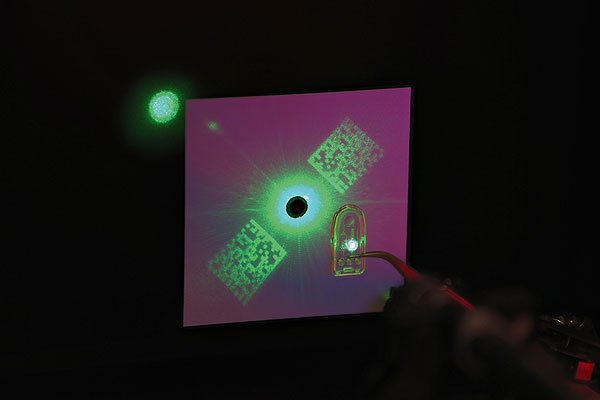 Micro Systems researched and developed a now ready for use lab-on-a-chip that can be inserted into a hand carried measuring instrument, for example for the execution of a drug test with blood or urine. Additionally, a nano structure for the hologram of a QR code could be integrated onto the end of one of the dia 0.8 mm ejector pins as a covert security verification when required. By using a laser light (laser pointer), this hologram can be made visible, significantly useful for discretely integrated counterfeiting preventive measures. With 20+ years experience in micro mold, Micro Systems achieves outstanding injection molded micro parts by replicating a nanostructure of only 300 nm (a 1/200 of a human hair).
Micro Systems researched and developed a now ready for use lab-on-a-chip that can be inserted into a hand carried measuring instrument, for example for the execution of a drug test with blood or urine. Additionally, a nano structure for the hologram of a QR code could be integrated onto the end of one of the dia 0.8 mm ejector pins as a covert security verification when required. By using a laser light (laser pointer), this hologram can be made visible, significantly useful for discretely integrated counterfeiting preventive measures. With 20+ years experience in micro mold, Micro Systems achieves outstanding injection molded micro parts by replicating a nanostructure of only 300 nm (a 1/200 of a human hair).
What are the advantages and disadvantages of lab-on-a-chip?
Lab-on-a-chip technology has a great advantage in delivering clinical analyzes that used to be only available with laboratory facilities, especially in remote areas or urgent situations. Moreover, due to its minimal reagent use and chemical waste, lab-on-a-chip technology has benefits in cost effectiveness and the environment. Additionally, by needing fewer samples of blood, urine, saliva, etc., the use of low volume samples could ease the strain on patients. The application of lab-on-a-chip technology could also improve working productivity in comparison to traditional methods. The incorporation of microchannels should theoretically enable high parallelization, enabling multiple studies to run concurrently on a single chip.
In some cases, lab-on-a-chip not only displays the ability to integrate and parallelize, but also outperforms more traditional technologies in terms of speed. For instance, the integration of PCR (a technique used to amplify DNA for pathogen identification) onto a lab-on-a-chip, known as microPCR, enables DNA to be amplified ten times more quickly than with traditional systems.
However, lab-on-a-chip technology raises some disadvantages when compared to the classic methods. At the micro- and nano- scale, physical impacts like surface roughness and capillary pressures bear a significantly greater significance, leading to unexpected complications in conventional technologies, for example, a low signal-to-noise ratio. As a consequence, lab-on-a-chip devices might occasionally deliver less effective outcomes than traditional methods. In addition, most lab-on-a-chip devices are not yet suitable for commercialization and industrialization, partly due to the fact that it requires an external system of specific machinery to be able to work properly.
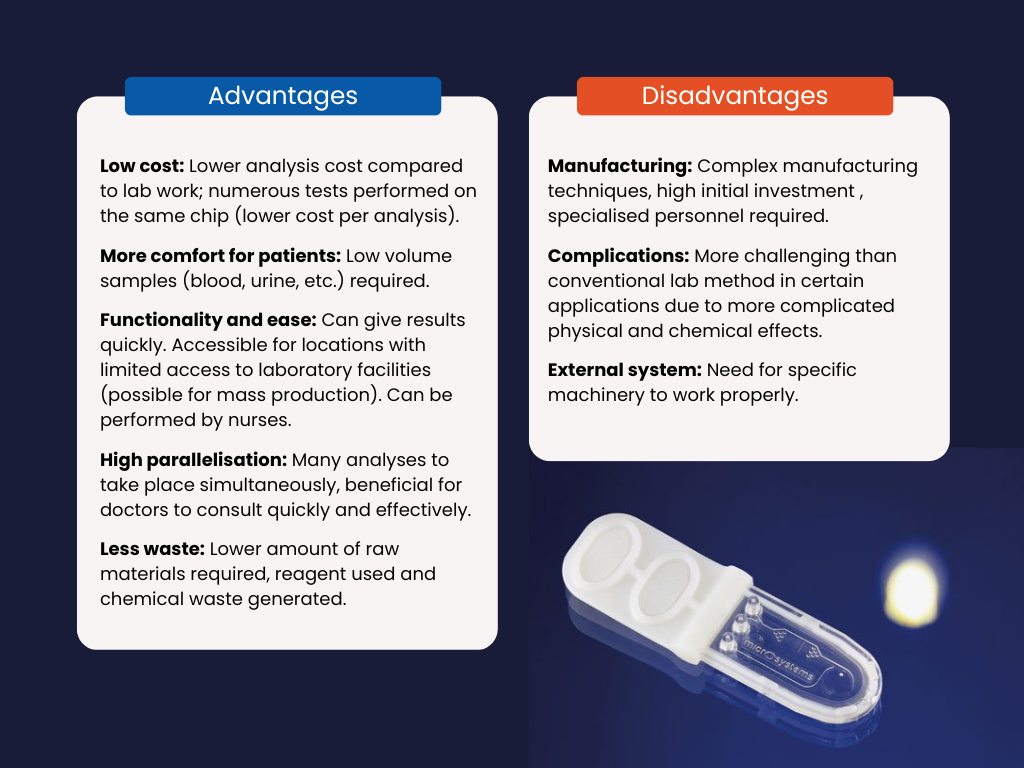
With their capacity to conduct a patient’s entire diagnostic during a session, using minimal equipment at an affordable cost, lab-on-a-chip devices will soon alter the way analyses are carried out. By making lab-on-a-chip devices more available worldwide, medical centres could serve more patients with the same human and physical resources, identify diseases early and start treating them right away, and provide the right care to people who truly need it without the use of uncommon and expensive medicines.
Micro Systems specializes in the design, manufacture and validation of ultra precision micro molds for the medical, pharmaceutical and optical markets. Micro Systems has developed a fully hardened 50 Rc Injection Mould Insert for production molding of COC lab on a chip microfluidic blood analysis device. We have a dedicated micro molding facility, and have ISO13485 and ISO9001 certifications. For more information, please Contact us or visit our website.
References:
Karanassios, V. (2018) Microfluidics and nanofluidics: Science, fabrication technology (from cleanrooms to 3D printing) and their application to chemical analysis by battery-operated microplasmas-on-chips, IntechOpen. Available at: https://www.intechopen.com/chapters/61556 (Accessed: 22 May 2023).
Nightingale, A. and Howie, P. (2022) Lab-on-chip devices: Materials considerations, Med. Available at: https://www.med-technews.com/medtech-insights/medtech-materials-and-assembly-insights/lab-on-chip-devices-materials-considerations/ (Accessed: 22 May 2023).
(No date) A review of PDMS microfluidic chips and fabrication techniques. Available at: https://www.ufluidic.com/blogs/blog-on-chips/a-review-of-pdms-microfluidic-chips-and-fabrication-techniques (Accessed: 22 May 2023).
Micro Systems’s vast know-how in design, ultra-precision micro machining capabilities and expert knowledge in micro molding technology allow us to manufacture advanced microfluidic molds with tolerance as low as +/-0.001mm, with integrated optics. We have a dedicated micro molding facility, and have ISO13485 and ISO9001 certifications. For more information, please Contact us or visit our website.

